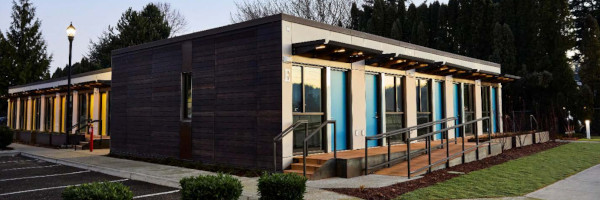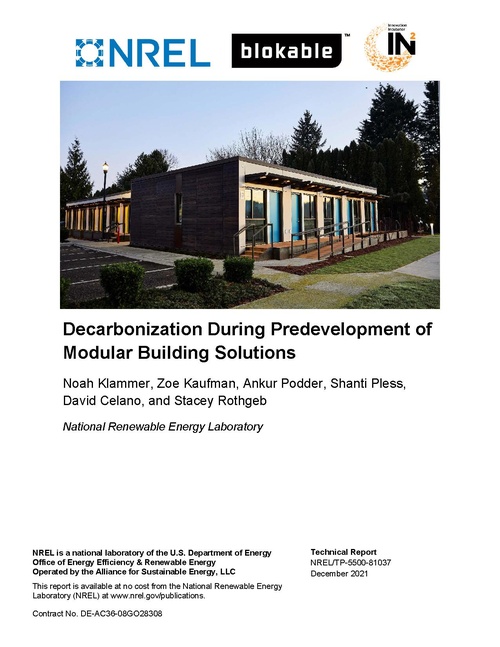Decarbonization During Predevelopment of Modular Building Solutions
Affordable, zero carbon emissions is an important climate-performance target for the future of
multifamily housing, and the multifamily construction industry holds an essential position in achieving this goal in the United States. Building construction and operation accounts for 37% of global energy-related carbon emissions (UN Environment Programme 2021). Meanwhile, an additional 3.8 million housing units are needed to address the shortage in the United States.
To date, net zero energy (NZE) has served as a tangible preliminary target for high-performance building in both voluntary certification programs and, now, building energy codes. Industrialized construction is one approach to efficiently achieve affordable housing that implements NZE strategies. These dwelling units are often all-electric and outfitted with rooftop solar arrays, and they produce at least as much energy through on-site renewable resources as they consume each year, enhancing energy affordability. However, the full potential of affordable, NZE housing has not yet been tapped, due in part to incremental costs of NZE strategies surpassing traditional budgets for affordable housing projects. Additionally, as new construction becomes more energy efficient, the greenhouse gas (GHG) emissions from the construction industry play a proportionately larger role in environmental impact and must be considered when evaluating methods of construction. There has been limited investigation into the trade-offs between sitebuilt and industrialized construction buildings from the perspective of reducing the incremental cost of NZE strategies and reducing GHG emissions resulting from upfront and operational emissions that are “embodied” in the building’s life. This report details actionable pathways for the industry to leverage advanced building construction, reduce NZE incremental costs, and achieve significant GHG emissions reduction by 2030.
This effort demonstrates a pathway to affordability and emissions reduction via specific strategies within the framework of industrialized construction. Various decarbonization strategies were compared in “what-if” scenarios at each development stage, using cost, energy, and emissions modeling, with the most impactful and viable strategies proposed in the resulting pathway. The primary audience, stakeholders, and beneficiaries for this methodology are productized modular builders and associated investors who are interested in (1) NZE incremental cost reduction and (2) GHG emissions reduction. “Productized” here refers to the repeatable, solutions-based, packaged design that a manufacturer commits to developing, evolving, and producing and delivering at scale, over time. The case study is analyzed over the years 2016– 2030, where the production builder begins instituting the analysis and intervention 5 years after initial product development.
The unique contributions from this framework are two methodologies:
- Methodology I is focused on cost reduction through learning effects and experience
curves applied to NZE productized modular construction.
- Methodology II is focused on reducing GHG emissions per unit of housing, evaluated
via a life cycle assessment (LCA). The reductions come from a variety of strategies, including: the bill of materials, learning effects on production waste, learning effects on logistics, decarbonization of the electrical grid, and energy demand management. As the primary stakeholders, productized modular builders can leverage this framework as a development road map for strategic planning to invest and allocate necessary resources in their facilities that (1) encourage labor learning and increased productivity, and (2) continuously increase the annual production of dwelling units to reach a goal of 10,000 dwelling units annually by 2030. This framework introduces three development phases that modular builders can plan to follow to achieve financially viable high-performance projects: Pre-Build Product Development Phase (years 1–5), Industrialized Construction Phase (years 6–10), and Advanced Manufacturing Phase (years 11–15 and beyond).

